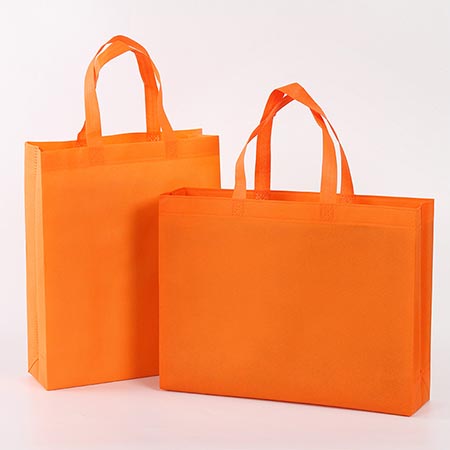How to Choose the Right Thickness for Non-Woven Drawstring Bags?
In day-to-day packaging and logistics, selecting the appropriate GSM (grams per square meter) for non-woven drawstring bags is a common pain point for buyers. Go too thick, and you overspend on materials; too thin, and you risk breakage. While most product weight ratings are derived under ideal lab conditions, they often fail to account for real-world factors like vibration, abrasion, or fluctuating temperature and humidity.
This article presents a systematic field test of four common GSM levels (60–120gsm), simulating real-world challenges such as maritime transport, warehouse stacking, and multi-climate environments. It reveals how different fiber structures perform under dynamic stress—especially in terms of seam fatigue and drawstring slippage thresholds—offering a data-driven guide to help various industries make informed packaging choices.
No-Nonsense Field Testing
1. Basic Load Test: Bottled Water Fill (1 bottle ≈ 0.5 kg)
- 60gsm: Holds 16 bottles (8kg), can be lifted 10 times without tearing
- 80gsm: Holds 25 bottles (12.5kg), can be carried while walking
- 100gsm: Holds 36 bottles (18kg), can be lifted briefly by an adult
2. Drag Test
After filling with heavy items, bags were dragged 3 meters across concrete:
- 60gsm: Slight fuzzing at the bottom
- 80gsm: No visible damage
- 100gsm: No change at all
3. Real-Item Comparative Test
| Household Item |
60gsm Performance |
80gsm Result |
100gsm Stress Test |
| 5L cooking oil (4.7kg) |
Lift for 10 minutes |
Carry up 3 flights of stairs |
Hang for 2 hours without failure |
| Case of 24 beer bottles |
Slight bottom deformation |
5 km transport with no issue |
Reused 10+ times |
| Pet cat (4–5kg) |
Short-distance OK |
Add anti-scratch layer |
Suitable for air cargo |
�Insider Note: When carrying irregular-shaped items, the actual load capacity of 80gsm bags may drop by up to 35% from rated values.
The Hidden Science of Materials
1. Fiber Orientation
- Vertical alignment: Increases tensile strength by 20%
- Cross-laid webbing: Doubles abrasion resistance
2. Heat Sealing Techniques
- Standard embossing: Load capacity ≈ 8kg
- Diamond embossing: Load capacity ≈ 12kg
- Ultrasonic welding: Load capacity ≈ 15kg
Environmental Impact Testing
| Condition |
60gsm Degradation |
80gsm Behavior |
100gsm Performance |
| Rainy transport (8 hrs) |
Strength ↓ 40% |
Strength ↓ 25% |
Strength ↓ 12% |
| Hot van (50°C) |
Deformation 18% |
Deformation 8% |
Deformation 3% |
| Freezer (-18°C) |
Prone to cracking |
Withstands 24 hrs |
Recommended option |
The GSM Selection Golden Rules
| Use Case |
Recommended GSM |
Price Advantage |
| Trade show giveaway bags |
60–80gsm |
Save up to 30% |
| Supermarket shopping bags |
80–100gsm |
Best value balance |
| Hardware and tools packaging |
100–120gsm |
Durability first |
Cost-Saving Tip: For sharp or pointed items, go with a lower GSM + double-layer bottom—cheaper and just as effective.
Overlooked but Critical Factors
1. Drawstring Quality > Fabric Thickness
- A poor-quality drawstring can reduce load capacity by up to 50%
- Quick field test: Pull the string hard—if it can hold an adult’s weight without snapping, it’s qualified
2. Stitching Makes or Breaks the Bag
- Single-line stitching: For loads under 5kg
- Double stitching: Increases weight tolerance by approx. 3kg
- Triangular reinforcement: Ideal for liquid-filled bottles
Industry-Specific Bag Recommendations
- Apparel: 80gsm is sufficient (use cost savings to add vibrant prints)
- Hardware components: 100gsm + anti-abrasion coating (prevents tearing from sharp edges)
- Food products: 60gsm + thickened drawstring (balances strength and cost)
FAQ
- Q: Is higher GSM always thicker?
- A: Not necessarily! An 80gsm bag made with triple embossing may feel thicker and more rigid than a standard 100gsm one.
- Q: Why is actual load capacity sometimes lower than stated?
- A: Two common factors are often missed:
Whether the drawstring was pulled tight after loading
Whether the items inside have sharp edges
- Q: Is extra GSM needed for sea freight?
- A: Not always. The key is how you pack:
Keep each individual bag load ≤15kg
Use +20gsm bags for the bottom layer in stacked boxes
Conclusion
Test results show that selecting the right GSM for non-woven drawstring bags requires balancing load demands with environmental variables. Among the tested options, 80gsm offered the best performance-to-cost ratio, with a dynamic load capacity equal to 76% of its static rating.
It’s also worth noting that double-stitched seams increase load efficiency by up to 40%, and that using the 1:80 ratio rule (drawstring diameter:GSM) can significantly reduce slippage risk. In rainy seasons or for cross-border shipping, using cross-laid fiber structures with a 12% GSM redundancy is advisable.
As breakthroughs in biodegradable materials continue, lighter yet stronger eco-bags may soon redefine current standards. Until then, thoughtful material matching remains the key to minimizing breakage and maximizing efficiency.




 We like to do design according to all the customers' requirements, or offer them our new designs. With strong OEM/ODM capabilities, we can fill your sourcing demands.
We like to do design according to all the customers' requirements, or offer them our new designs. With strong OEM/ODM capabilities, we can fill your sourcing demands.